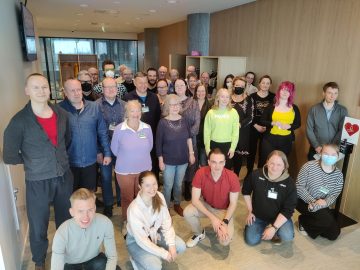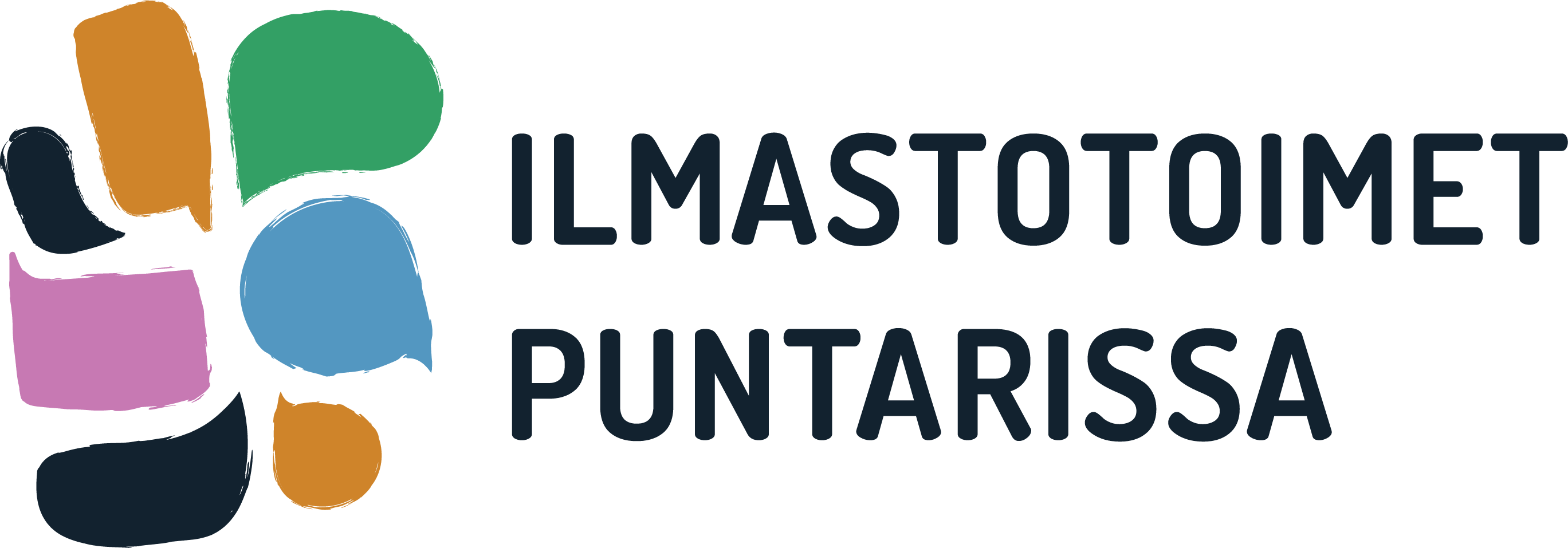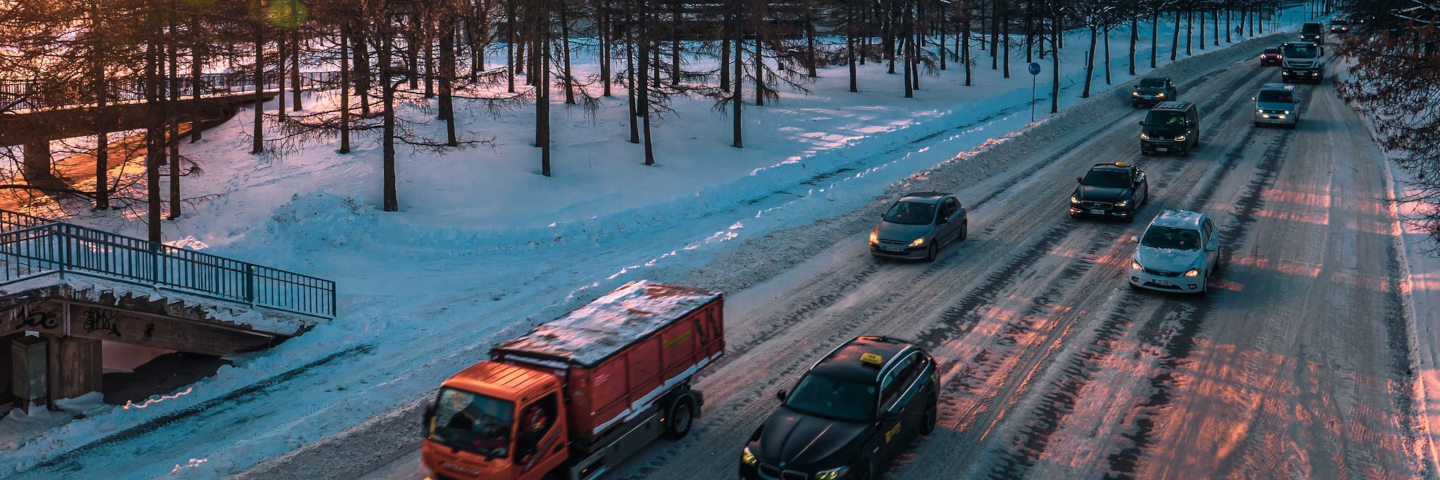Uusimaa Traffic Jury
What is it about?
The Helsinki-Uusimaa region aims to become carbon neutral by 2030. In its efforts to reach this goal the Helsinki-Uusimaa Regional Council wanted to hear the views of the region’s inhabitants. Therefore a Citizens’ Jury on carbon neutral road transport was convened. The mission of the Jury was to estimate how to implement transport emission reductions in the Helsinki-Uusimaa region in an effective and fair way.
Invitation to the Jury was sent in February to 6,000 randomly selected individuals living in the Helsinki-Uusimaa region. From the approximately 400 people who volunteered to take part in the Jury, 40 people were randomly selected using quotas so that the Jury composition corresponded to the population of Uusimaa as well as possible. Altogether 32 people took part in the Jury throughout the whole process. The Jury convened on the 2nd, 9th, 23rd and 24th of April in Pasila, Helsinki. The statement of the Jury was published and handed to the Helsinki-Uusimaa Regional Council at the publishing event held 5th of May 2022.
The Citizens’ Jury followed deliberative mini-public method. In deliberative mini-public the participants familiarize themselves comprehensively with the topic under discussion for example by consulting experts and then discuss different views with people coming from different backgrounds. The principles followed in the discussions are honoring the other participants, justification and reflection of one’s own opinions and being open to the opinions of others. At the end of the discussion, the participants form a statement on the topic.

Information on the Uusimaa Traffic Jury
What was the mission of the Uusimaa traffic jury?
The Citizens’ Jury discussed Uusimaa’s low-carbon transport measures – i.e. measures that can reduce greenhouse gas emissions from traffic and promote the province’s carbon neutrality. The council’s task was to make recommendations to the Helsinki-Uusimaa Regional Council regarding which emission reduction measures are the most important from the citizens’ point of view, and how they can be implemented in an acceptable and fair manner. The Helsinki-Uusimaa Regional Council processes the recommendations of the citizens’ jury as part of the implementation of low-carbon transport measures.
Who participated the jury?
The persons to be invited to the Citizens’ Jury were randomly selected from among all residents of Uusimaa between the ages of 18 and 80 with the random sampling of the Digital and Population Data Services Agency. The invitation to the jury was sent to a total of 6,000 people, who could register as a volunteer for the citizen jury by filling out the online survey mentioned in the invitation by February 25, 2022.
From among those who registered as volunteers, 40 participants were chosen by random sampling in such a way that the composition of the jury was as diverse as possible and corresponded as well as possible to the population of Uusimaa in terms of age, gender, place of residence, educational background and movement habits. In the end, 32 residents of Uusimaa from different parts of the province participated in the jury work.
How did the jury work?
The Citizens’ Jury met face-to-face on three weekends in April 2022 for a total of four days. At the first meeting, the members of the jury heard a presentation about Uusimaa’s carbon neutrality work, got to know each other and discussed in small groups the effectiveness of traffic emission reduction measures. Between the first and the second meeting, the jury heard experts via remote connection and received answers to the questions raised in the first discussion. At the second meeting, the discussion on emission reduction measures was continued, focusing especially on the social justice of the measures. The third and fourth working days were reserved for writing the jury’s opinion or statement. The statement was first worked on in small groups and finally among the entire jury.
The Citizens’ Jury followed the method of the so-called deliberative mini-public. A deliberative mini-public includes, among other things, comprehensive familiarization with the topic under discussion, discussion between people from different backgrounds and consideration of different arguments together, and formulation of a common vision at the end of the discussions.
Where and when was the jury organized?
The jury met in April on a total of four days, 2.4., 9.4. and 23-24 April 2022 at Sokos Hotel Tripla in Pasila, Helsinki. In addition, between meetings, the jury heard experts via remote connection on one weekday evening for a total of about three hours. The expert hearings were recorded, and it was possible to watch them afterwards.
Were the participants compensated for participating the jury?
Persons participating in the council process from start to finish were paid a compensation of 400 euros, which was taxable income. In addition, the participants of the jury were offered meals during the jury days. Travel expenses and parking expenses were also reimbursed.
Who implemented the jury?
Researchers from the Finnish Environment Institute and the University of Turku were responsible for the recruitment and practical arrangements of the council as part of the FACTOR research project. You can familiarize yourself with the research group on the Contact page. The convenor of the jury was the Helsinki-Uusimaa Regional Council, which also deals with the board’s recommendations.
Additional questions are answered by Heli Saarikoski, the leading researcher of the Finnish Environment Institute, heli.saarikoski [at] syke.fi.
The materials of the Uusimaa Traffic Jury
The Citizens’ Jury dealt with fourteen road traffic emission reduction measures in particular. The measures and background information about their effectiveness were collected in the attached material package, which was distributed to the participants at the beginning of the citizens’ jury. In addition to the material packages, the citizens’ jury heard a wide range of experts to support the formation of the declaration.
Presentations by experts to the citizens’ jury 6.4.
Mikael Hildén (Finnish Environment Institute): The role of traffic as a source of emissions.
Heikki Liimatainen (University of Tampere): How to reach the goals of the fossil-free transport roadmap?
Hanna Mela (Finnish Environment Institute): Answers to the questions of traffic officers: Traffic
Emilia Suomalainen (Finnish Environment Institute): Answers to the questions of the traffic authorities: Emissions
Presentations by experts to the citizens’ jury 23.4.
Mikael Hildén (Finnish Environment Institute): The 6th assessment round of the International Climate Panel IPCC.
Hanna Mela (Finnish Environment Institute): Limiting driving in the city center

